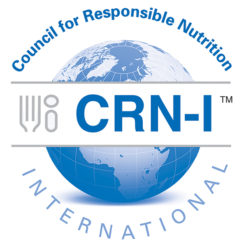Nutrient Reference Values for Bioactives? New Approaches
1 DECEMBER 2012 | KRONBERG IM TAUNUS, GERMANY
Download 2012 CRN-I Scientific Symposium Report (PDF) or view via European Journal of Nutrition
ABSTRACT TRANSLATIONS:
Arabic | Chinese | English | French | German | Japanese | Korean |Portuguese | Russian | Spanish
Nutrients can be classified as either “essential” or “non-essential,” the latter are also termed bioactive substances. Whereas the absence of essential nutrients from the diet results in overt deficiency often times with moderate to severe physiological decrements, the absence of bioactive substances from the diet results in suboptimal health. Nutrient reference values are set by Codex Alimentarius and regulatory bodies in many countries, mostly for essential nutrients with recommended daily intakes. The IOM in the United States has defined a set of four DRIs that, when data are appropriate, include an EAR, a RDA that is derived from the EAR, an AI for nutrients without appropriate data to identify an EAR, and an UL. From the RDA, the United States derives a labeling value called the DV, which applies to older children and most adults. In Codex, the equivalents of the DVs are the NRVs to be used in calculating percentage values on food labels. Nothing in the IOM documents specifies that labeling values can be set only for what have been defined to date as essential nutrients. Indeed, the US Food and Drug Administration sets a labeling value for dietary fiber based on the IOM AI for this ingredient. This conference explores the definitions, concepts, and data on two of the best examples of bioactive substances that, perhaps, should have NRVs: lutein and zeaxanthin, and n-3 long-chain polyunsaturated fatty acids.

